Florence, the birthplace of the Renaissance, is one of the most recognisable cities on the planet. From Brunelleschi’s awe-inspiring cathedral dome to the medieval Ponte Vecchio spanning the River Arno, it has enough attractions to see you through several visits.
But which of Florence’s buildings, monuments and churches should you see if you only have a few days there?
This is where I can help. Based on multiple visits to this historic city in Italy, I have curated a list of my favourite landmarks in Florence.
Experience the best of Italy’s art and culture by walking in the footsteps of Michelangelo and the Medici.
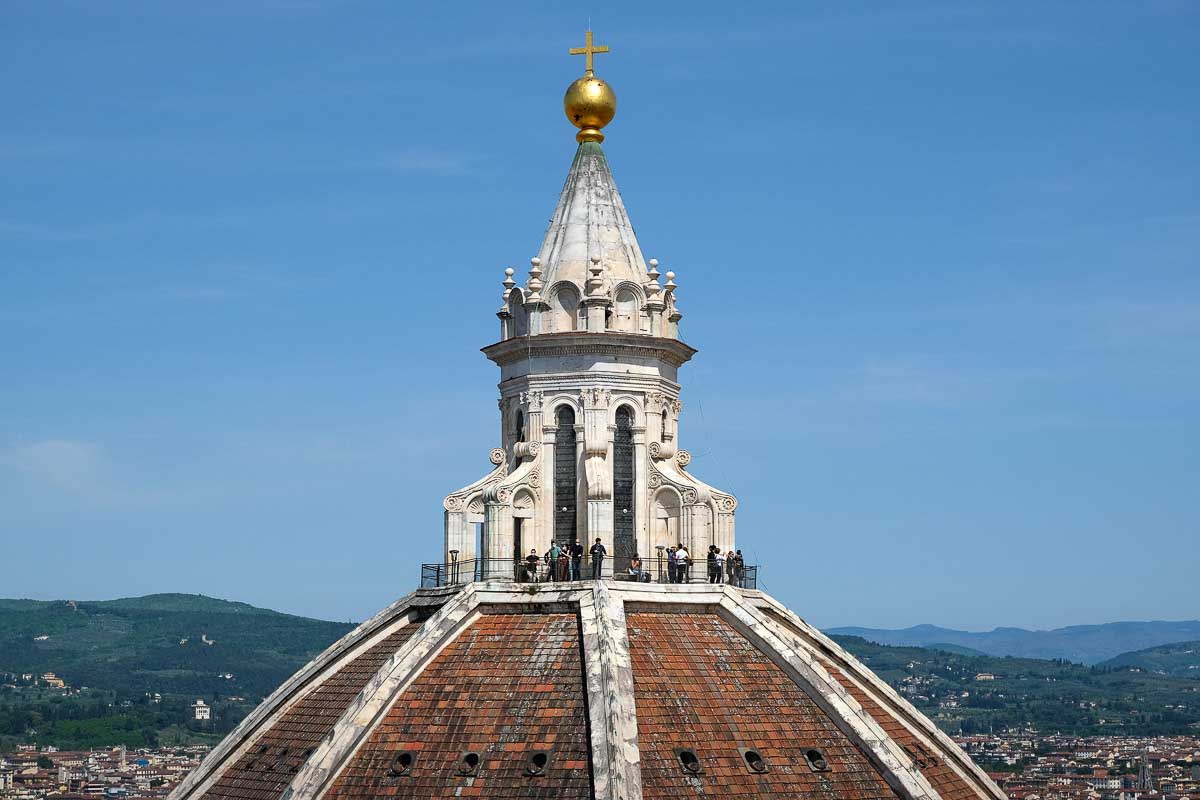
Some articles on this website contain affiliate links. This means that I may earn a small commission if you make a purchase through these links. As an Amazon Associate, I earn from qualifying purchases. Read the full disclosure here.
Famous Churches in Florence
Religion played a vital role in the social and political aspects of Renaissance life. Florence’s churches not only commissioned many extraordinary works of art, but the buildings were architectural masterpieces in their own right.
This first set of Florence landmarks reflects the importance of these sacred spaces.
Cathedral of Santa Maria del Fiore (Duomo)
The Cathedral of Santa Maria del Fiore, simply known as the Duomo, is ground zero of the Italian Renaissance. Its iconic dome is the visual and geographic centre of Florence. If you get lost, just look upwards.
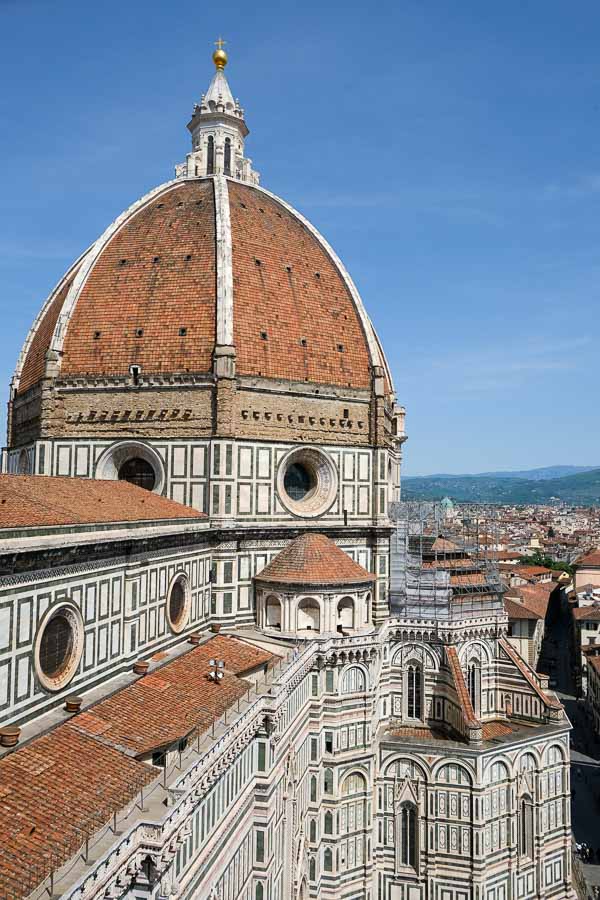
The façade of Florence’s Gothic cathedral is an explosion of pink, green and white Tuscan marble. However, Brunelleschi’s magnificent dome is the building’s architectural claim to fame.
Although visiting the cathedral is free, the queues are epic and it’s safe to say that it is far more impressive on the outside than inside.
Basilica of Santa Croce
The 14th Century Santa Croce Church houses the tombs of the great and good of Florence, including Michelangelo, Dante, Galileo, Machiavelli and Rossini. This Franciscan church is also home to a fresco by Giotto, one of the first Renaissance painters, and its Pazzi Chapel was designed by Brunelleschi.
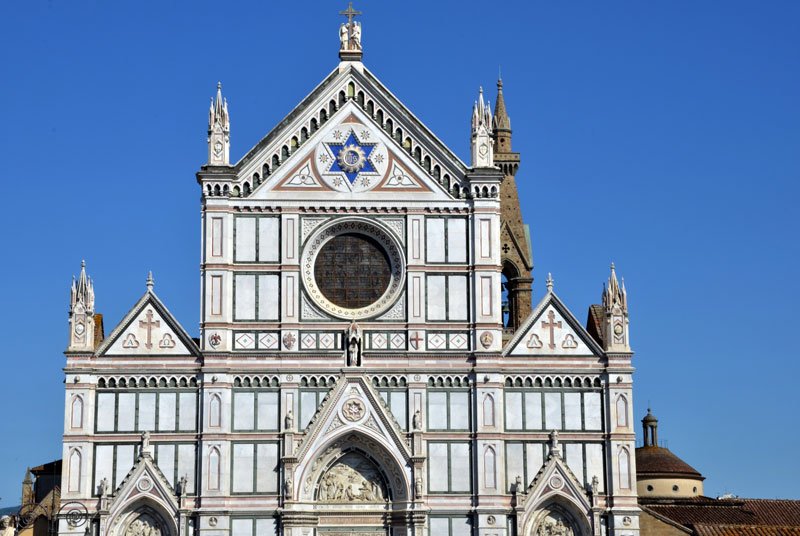
Its busy façade looks out onto Piazza Santa Croce, lined with shops and bars, and there is a famous leather school at its rear.
Orsanmichele
The criminally overlooked Orsanmichele is where the Renaissance began.
This was first a grain market and then a church for Florence’s guilds and merchants. In the late 14th Century, these powerful guilds commissioned statues to fill the church’s 14 exterior niches.
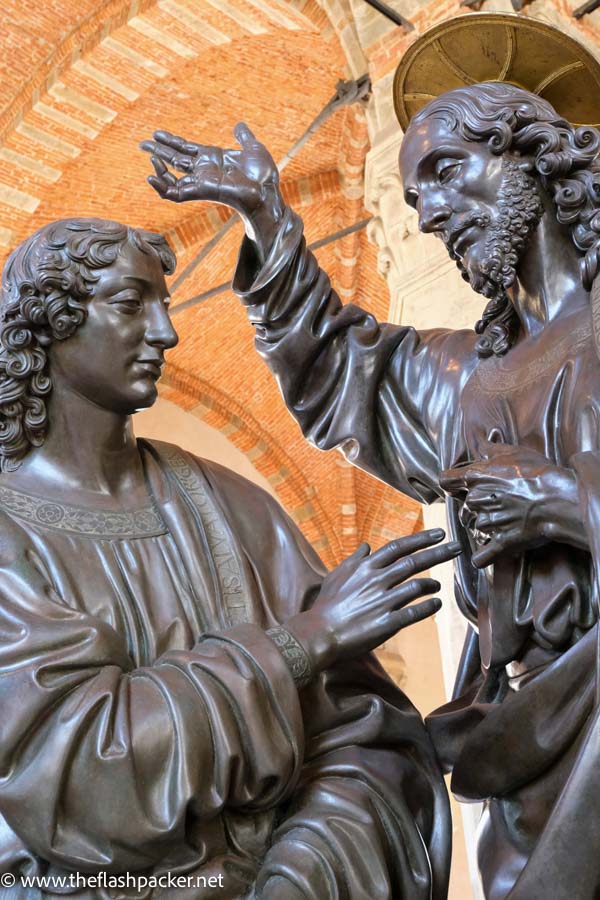
Although these niches are now occupied by copies –most of the original sculptures are housed in the small museum belonging to the church – it’s worth circling the outside of the building to take a look at them.
Basilica of Santa Maria Novella
This 13th-century Dominican church is an artistic feast.
There’s a masterclass in perspective in the early Renaissance masterpiece The Trinity by Masaccio, crucifixes by Giotto and Brunelleschi and art-filled side chapels. The Basilica of Santa Maria Novella also has a series of peaceful cloisters and a small museum.
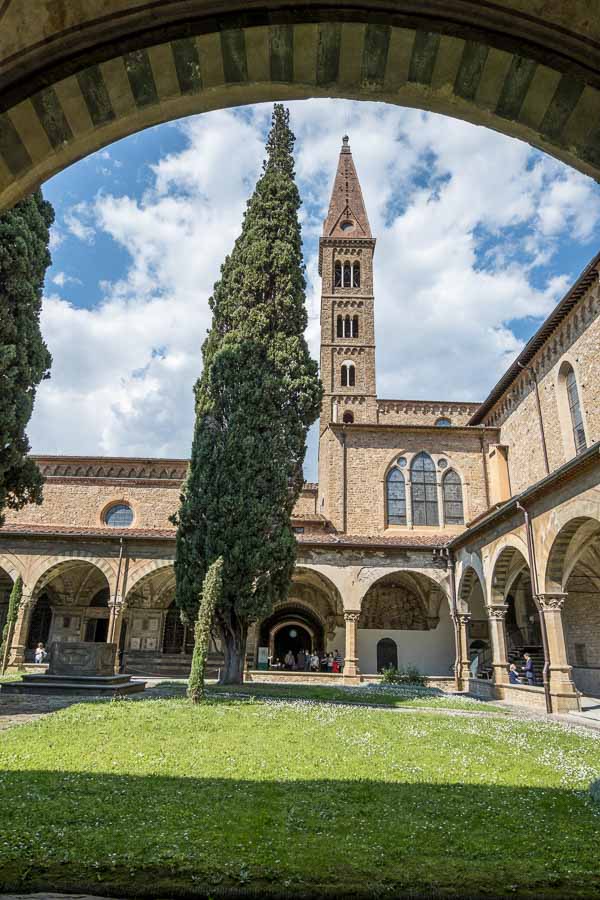
But the star of the show is the museum’s Spanish Chapel, its walls filled with frescoes by Andrea di Bonaiuto.
Basilica di San Lorenzo
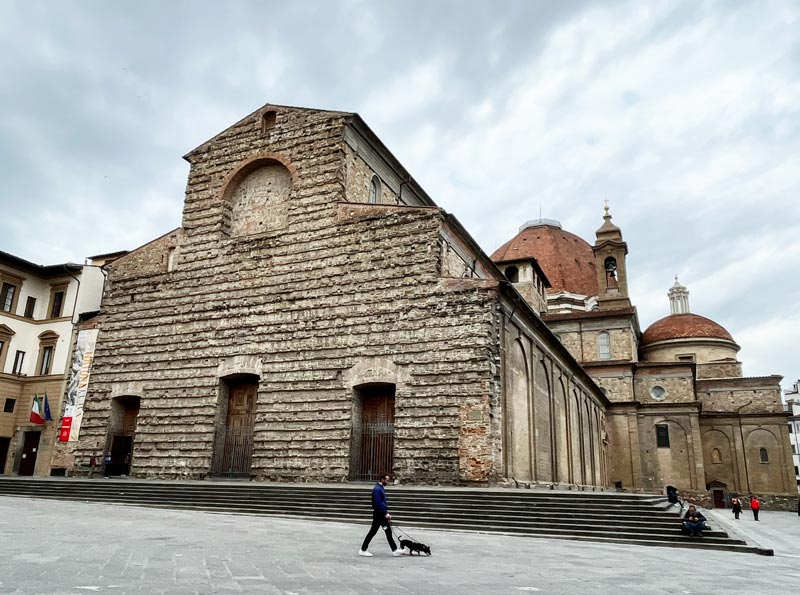
Built on the site of the first Christian church in Florence, the monumental San Lorenzo is the final resting place of the principal members of the mighty Medici family.
The list of those involved in its construction reads like a Renaissance Artist Who’s Who. Brunelleschi designed the building, Donatello worked on the bronze pulpits and Michelangelo designed the Laurentian Medici Library.
The Medici Chapels, which contain Michelangelo’s tomb sculptures, are part of the church complex (separate ticket required).
Brancacci Chapel of Santa Maria del Carmine
Located in the heart of the Oltrarno, this is one of my favourite churches in Florence.
Masaccio was the first great painter of the Italian Renaissance, and he created an unsurpassable fresco cycle within the walls of the Brancacci Chapel. Viewing the anguish of his Expulsion from Eden is worth the cost of your airfare to Florence.
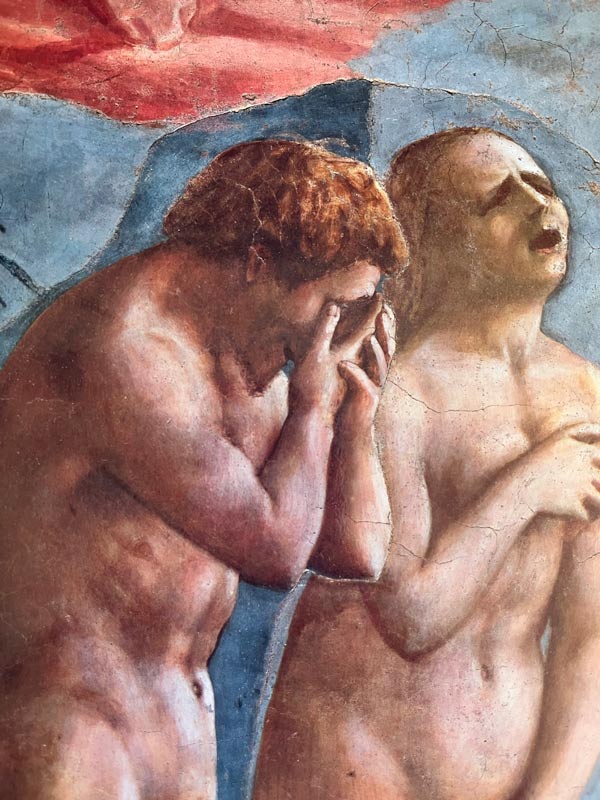
San Miniato al Monte
I love the legend associated with this church.
St. Minias was beheaded on the banks of the Arno in 250 AD. Unfazed by this stroke of bad luck, he picked up his head and walked to this site, where he died and was buried.
This is the oldest church in Florence and has an art-filled sacristy and a ceiling of glazed terracotta panels. But many people visit San Miniato for its views over the city of Florence.
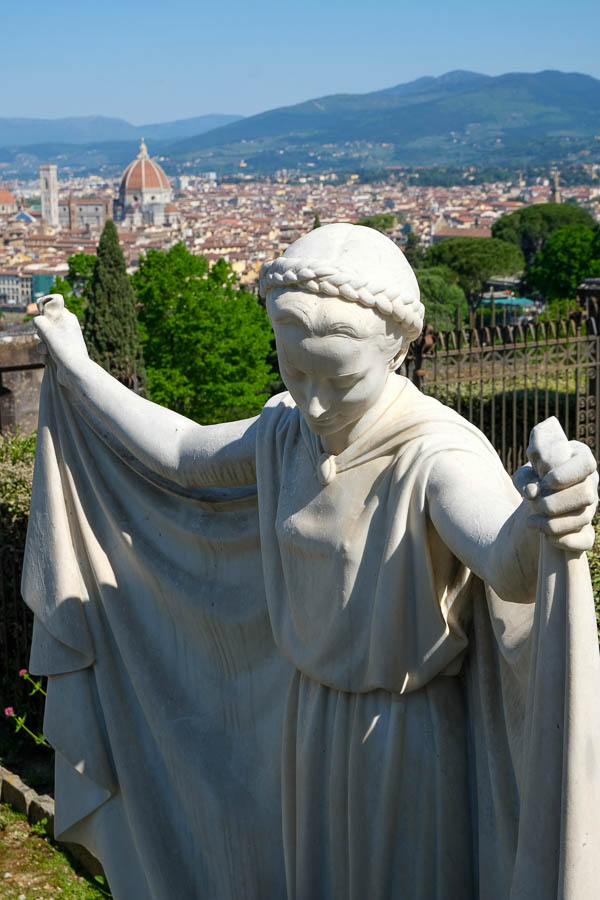
Famous Buildings in Florence
From former palazzi repurposed as world-class museums to an iconic bell tower, these famous buildings in Florence speak of the city’s rich history.
Giotto’s Tower (Campanile)
Rising above the historic centre of Florence like a giant exclamation mark, the views from this 270-foot bell tower are magnificent. This is a long and sometimes steep climb but the views make it worthwhile.
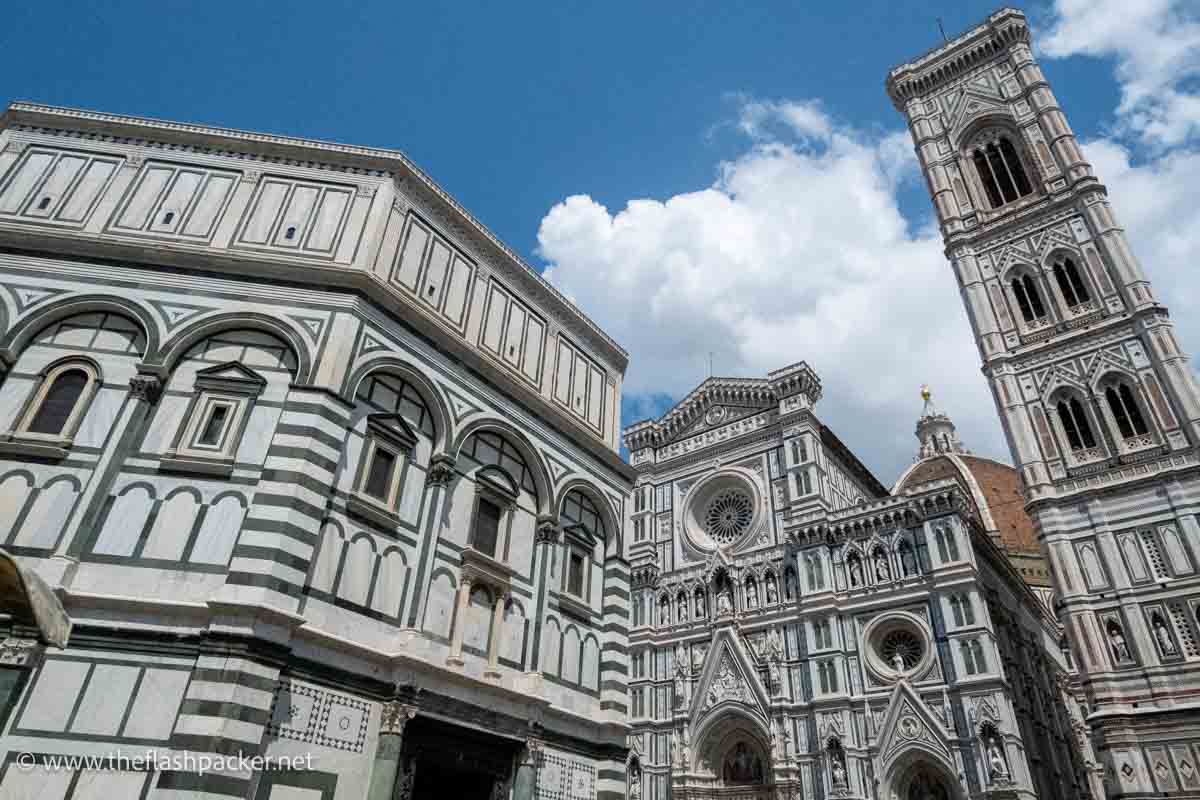
Designed by Giotto, this showpiece of Florentine Gothic architecture is embellished with statues and rich sculptural decorations and clad in polychromic marble. Although the first stone was laid in 1334, the Campanile wasn’t completed until 1359.
The Baptistery of St. John
Consecrated in 1128, the Baptistery of St. John is beautiful inside and out.
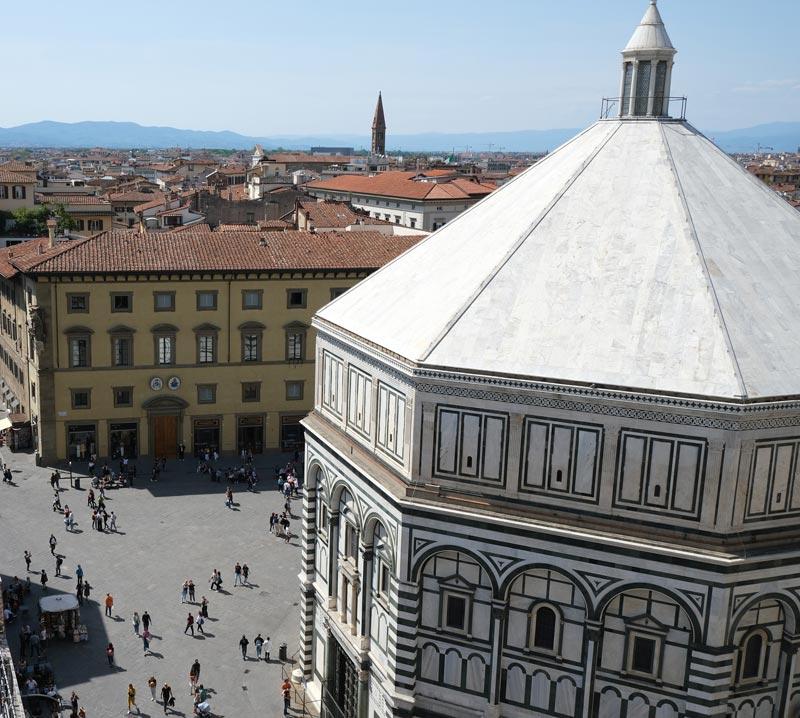
The competition to design the bronze doors of this octagonal building turbo-charged the Renaissance. Today, there are gleaming copies of Lorenzo Ghiberti’s winning entry on the doors facing the Duomo (he was also responsible for the doors on the Baptistery’s northern side).
Step inside to savour the medieval mosaic ceiling, covered with scenes from Genesis, the lives of Christ, St. John the Baptist and Joseph the Patriarch, and the Last Judgement.
Bargello Museum
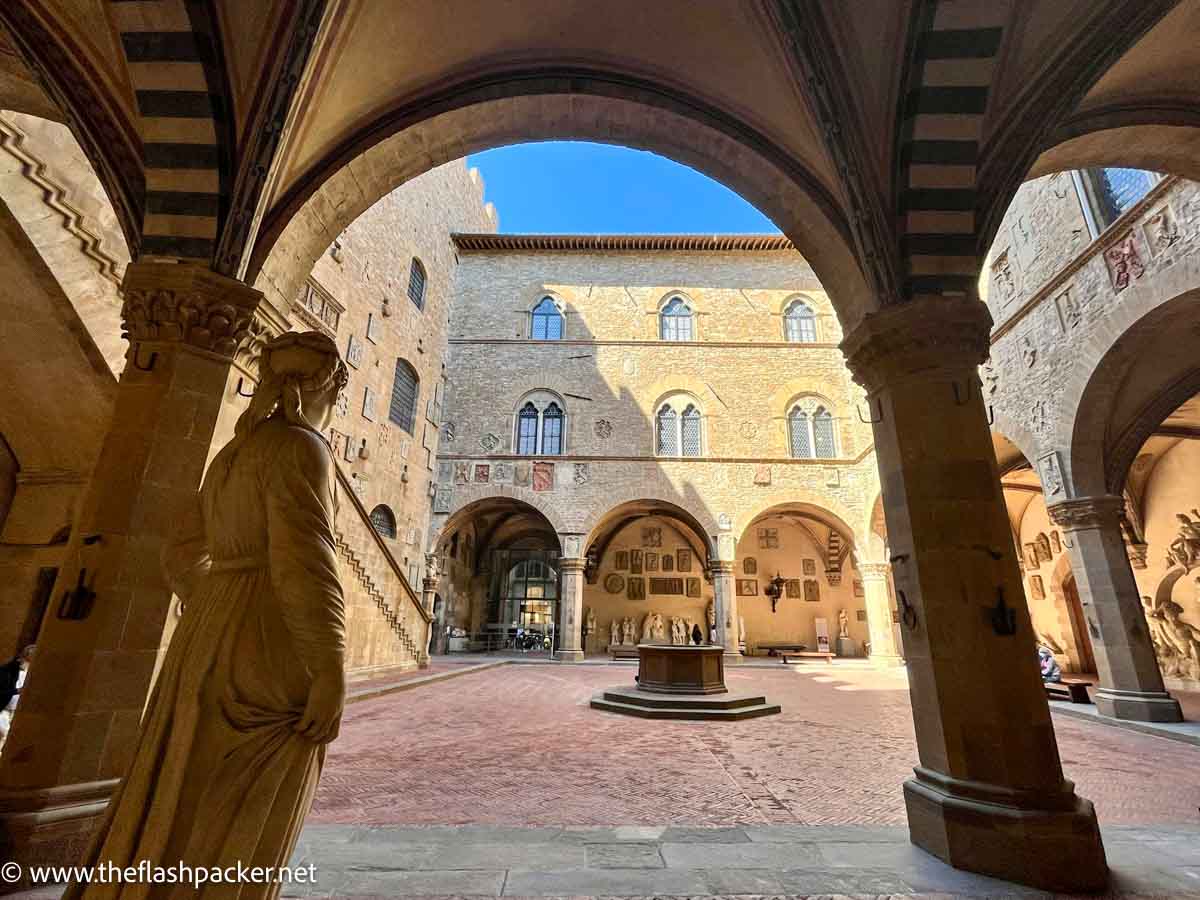
Entries from the winner (Ghiberti) and runner-up (Brunelleschi) in the Baptistery doors competition are just a few of the highlights of the Bargello Museum. Housed in a rustic former palazzo, its collection includes some of the best sculptures in Florence, spanning 150+ years of the city’s artistic heyday.
Other must-see statues include Michelangelo’s debauched Bacchus and noble Brutus, and Donatello’s St. George from Orsanmichele. Think of the Bargello as the sculptural equivalent of the Uffizi Galleries.
Uffizi Galleries
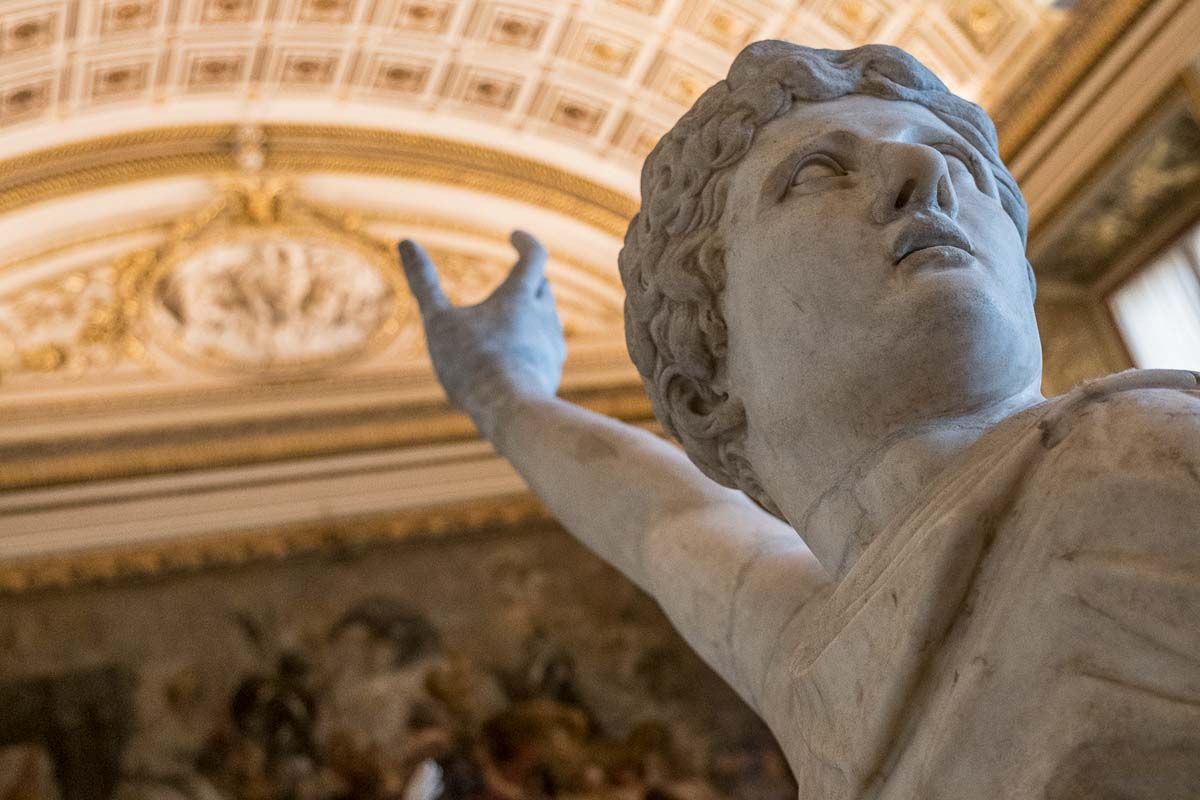
The world-renowned Uffizi Galleries barely needs an introduction.
Home to the world’s greatest collection of Italian art, all the big hitters are here, from Giotto’s early stabs at realism and perspective to Caravaggio’s magnificent Medusa. There are works by Raphael (Urbino’s favourite son), Titian, Botticelli, Michelangelo and Leonardo da Vinci among many others.
Galleria dell’Accademia, Florence
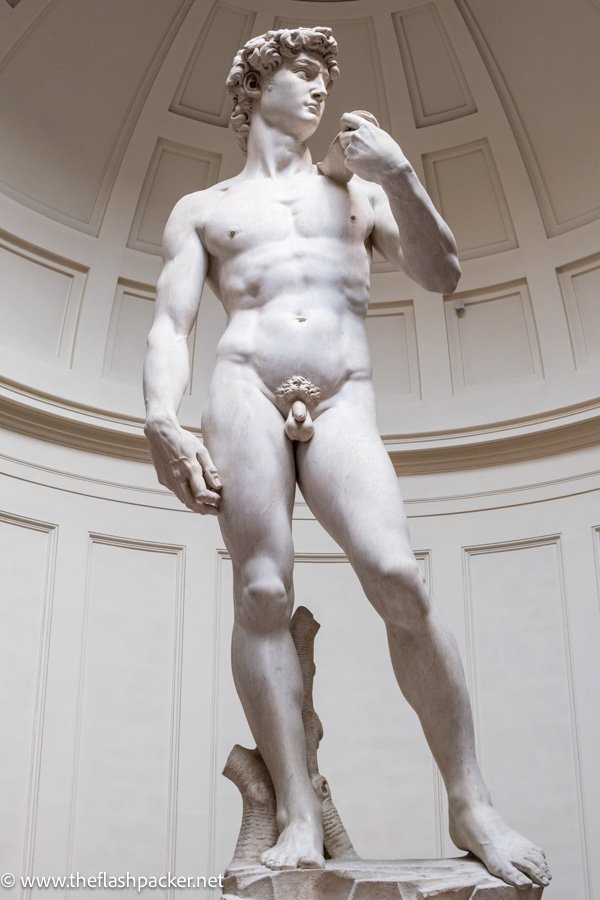
Visitors flock to Florence’s Accademia Gallery to inspect Michelangelo’s buff biblical shepherd from all angles. But there is more to the Accademia than David.
It is also home to the great master’s unfinished figures, known as The Prisoners or Slaves. Sculpted from the best blocks of marble from Carrara’s quarries, they look like they are trying to liberate themselves from the stone. Michelangelo’s chisel marks are still clearly visible.
Convent of San Marco
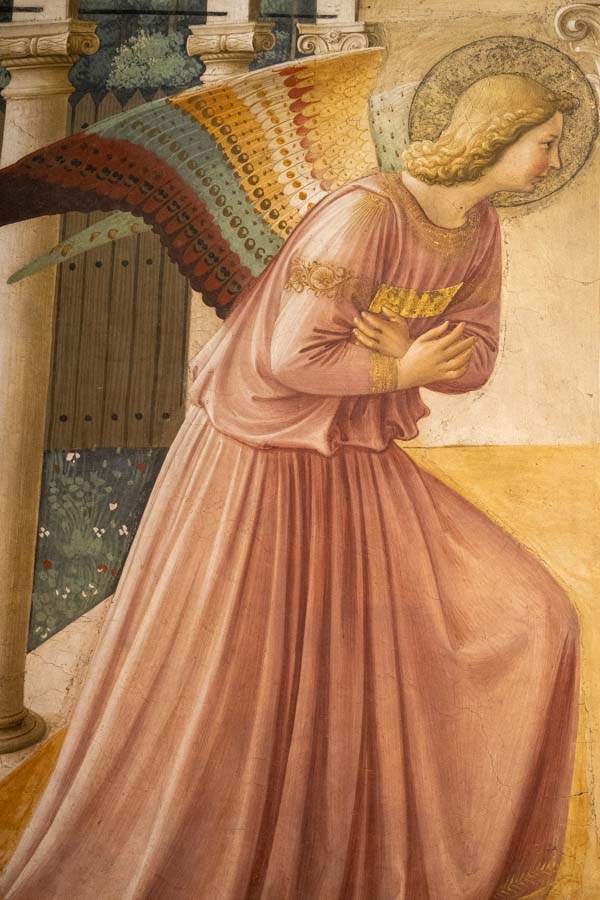
Located one block north of the Accademia, this former monastery is home to the finest collection of frescoes by the early Renaissance master Fra Angelico (1395 – 1455). Although he was trained in the medieval style of painting, he adopted Renaissance techniques, resulting in a blend of Christian symbolism and Renaissance realism.
Don’t miss the cell of Savonarola upstairs. More about him later.
Historical Landmarks in Florence
Florence is a living open-air museum, its rich history earning it a place on UNESCO’s World Heritage list. Here are the best historical landmarks to add to your list of places to visit in Florence, many of which relate to the Medici family who ruled the city (and Tuscany) in its heyday.
Medici Ricardi Palace
Step inside the home of Lorenzo the Magnificent (1449 – 1492) for its tiny Chapel of the Magi. This former library is famous for The Journey of the Magi by Benozzo Gozzoli and a flamboyant Baroque ceiling fresco.
The Medici Ricardi Palace was home to the Medici family from the mid-15th Century, with ownership passing to the Ricardi family in the 1700s. It also has a small courtyard garden, filled with the perfume of lime blossom.
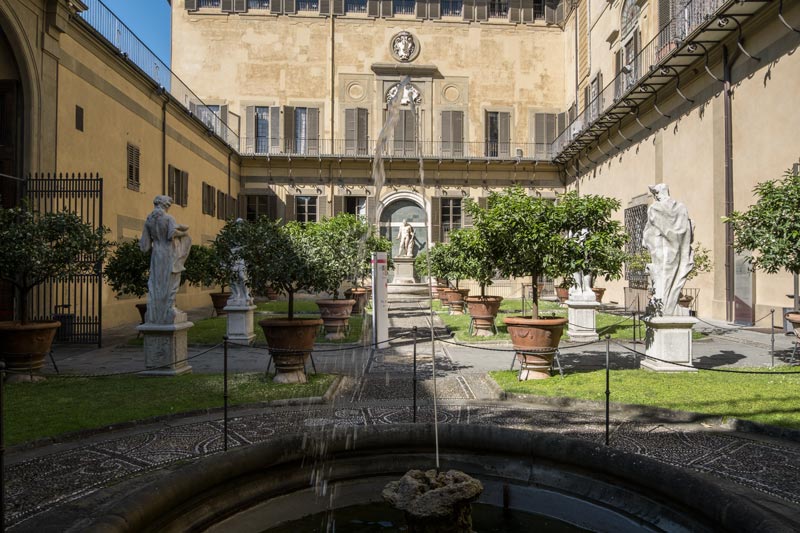
Savonarola’s Plaque
The Medici had to come a cropper at some point. The instrument of their (temporary) fall from grace was a charismatic monk called Girolamo Savonarola (1452 – 1498).
This puritanical fanatic turned Florence into a theocracy, denouncing the humanistic culture of the Italian Renaissance and sponsoring the “bonfires of the vanities”.
But it couldn’t last. Savonarola made many powerful enemies and was burned on a platform erected in Piazza della Signoria. This bronze plaque marks the spot where he was burned to death.
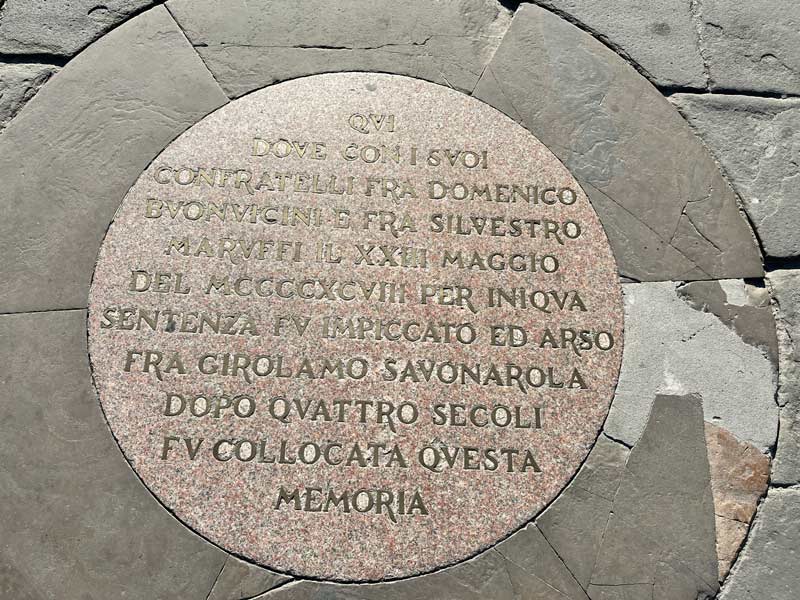
Palazzo Vecchio
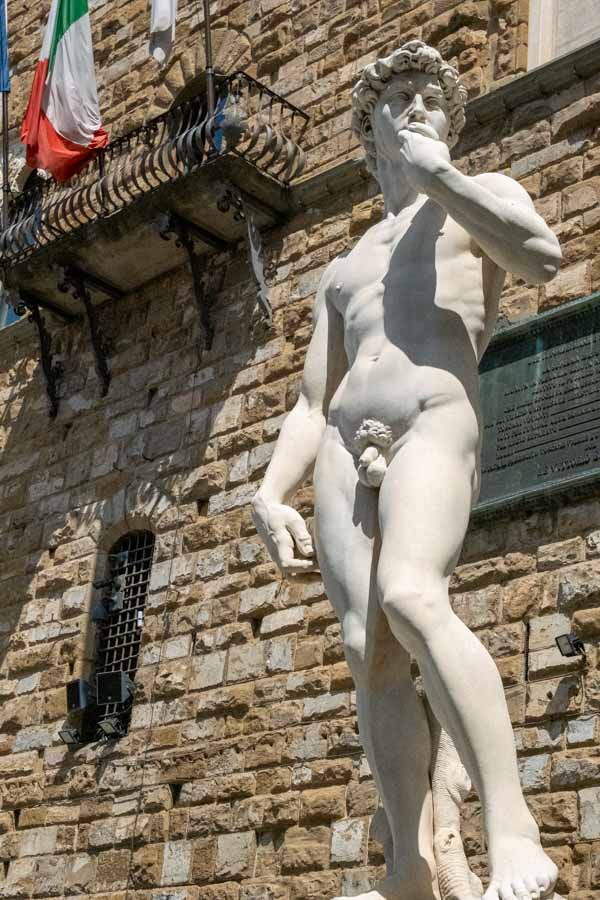
With its sky-scraping medieval tower, Palazzo Vecchio is the main landmark in Florence’s most famous square, Piazza della Signoria.
In Renaissance times, this was the Town Hall until Cosimo I de Medici (1519 – 1574) turned the building into a lavish palace for his personal use. Although you have to pay to visit Cosimo’s apartments, you can wander into the ground-floor courtyard for free.
For my money, the views from the top of the 300-foot tower of Palazzo Vecchio are amongst the best in town.
Pitti Palace
On the south side of the Arno River is the humble pile that Cosimo liked to call home.
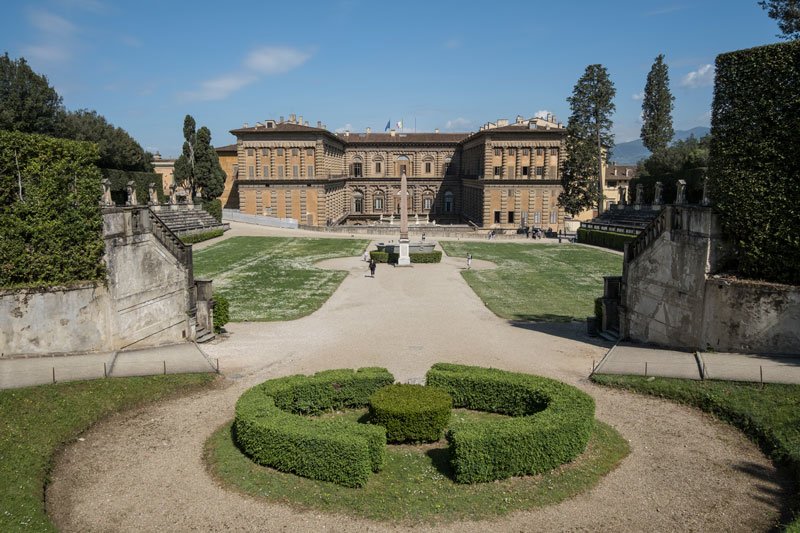
Purchased in 1550, the Pitti Palace (Palazzo Pitti) quickly became the new symbol of the Medici’s power over Tuscany. And it worked; Cosimo became Grand Duke of Tuscany.
Visit the Pitti Palace for the Palatine Gallery which displays some of Raphael’s Madonnas and Titian’s portraits, amongst the best artworks in Florence.
Ponte Vecchio
Back in the day, it was butchers’ shops that lined Florence’s most famous bridge, using the Arno as a handy waste disposal system. When the Medici family built the Vasari Corridor over the Ponte Vecchio, connecting the Pitti Palace with Palazzo Vecchio, gold and silver shops replaced this meat market.
Today, the Ponte Vecchio is one of the most iconic landmarks in Florence. It is perhaps at its best when it is lit up at night.
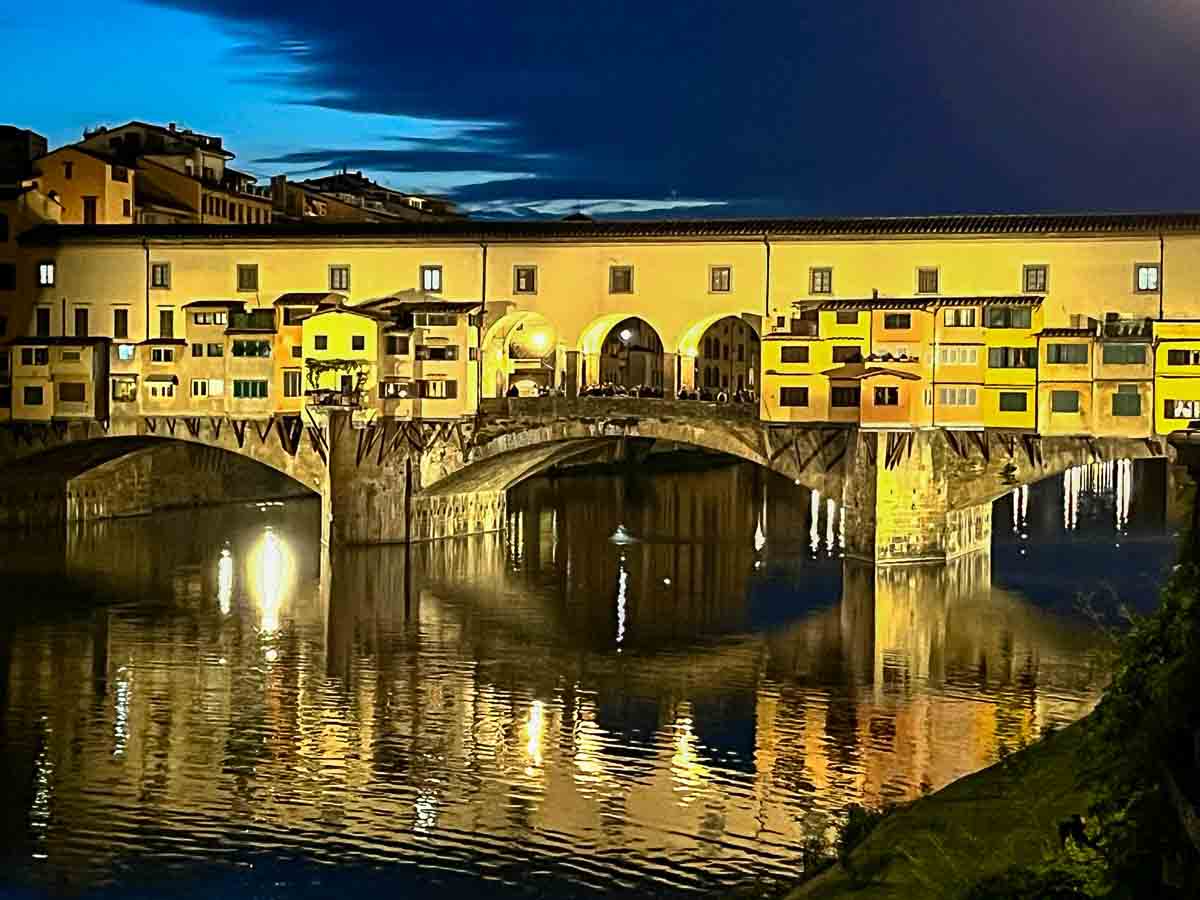
Mercato Centrale
Florence’s huge Central Market (Mercato Centrale) was built during the reunification of Italy around 1865. This iron-and-glass covered market is a temple to food.
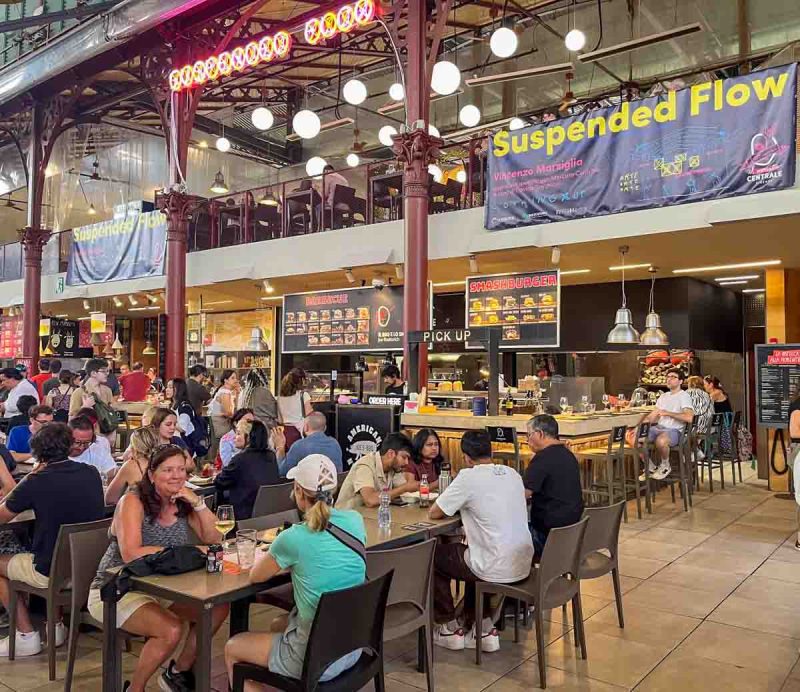
Piazzas and Gardens
Florence’s famous landmarks are not limited to buildings and monuments. The city is also home to a clutch of excellent squares and gardens that are landmarks in their own right.
Piazza della Signoria
Instantly recognisable, Piazza della Signoria has been Florence’s political and social heart since the 14th Century.
This expansive w-shaped square offers one of the greatest views in Europe, one that makes me take a sharp intake of breath each time I visit. Dominated by the towering Palazzo Vecchio guarded by a fake David, the sense of history is almost tangible, reverberating with past executions and celebrations.
To the left of the Palazzo Vecchio is the massive Fountain of Neptune, depicting the Roman god of the sea watching over his entourage of nymphs, tritons and dolphins. The dude on a horse to the left is Cosimo I, looking for all the world like Neptune.
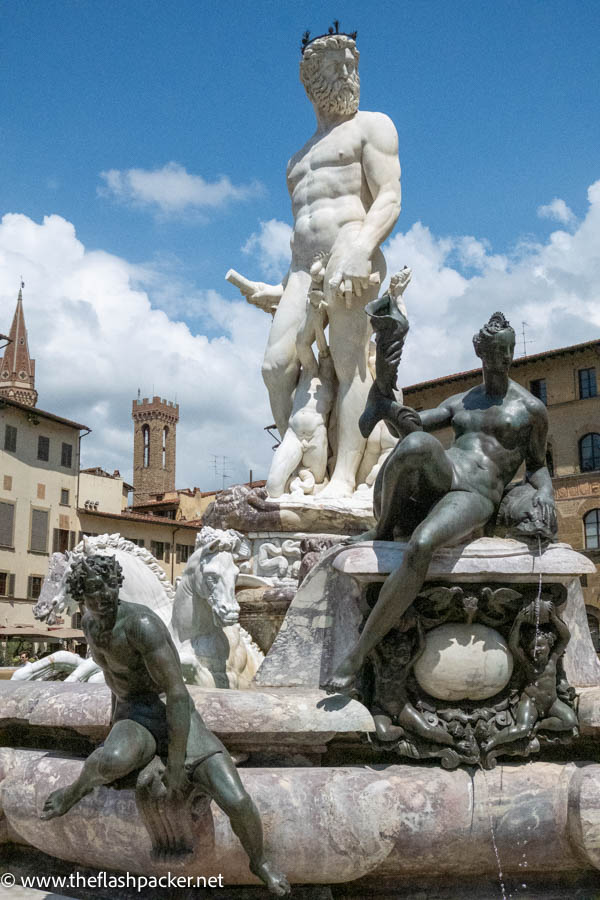
Loggia dei Lanzi
Welcome to Florence’s free open-air art gallery.
Located to the right of the Palazzo Vecchio in Piazza della Signoria, Loggia dei Lanzi was originally a space where ordinary Florentines could share what was on their mind. It was turned into an outdoor sculpture gallery by the Medici who valued good art over free speech.
This covered platform is home to some of the best statues in Florence, including Giambologna’s Rape of the Sabine Women and Perseus by Benevenuto Cellini.
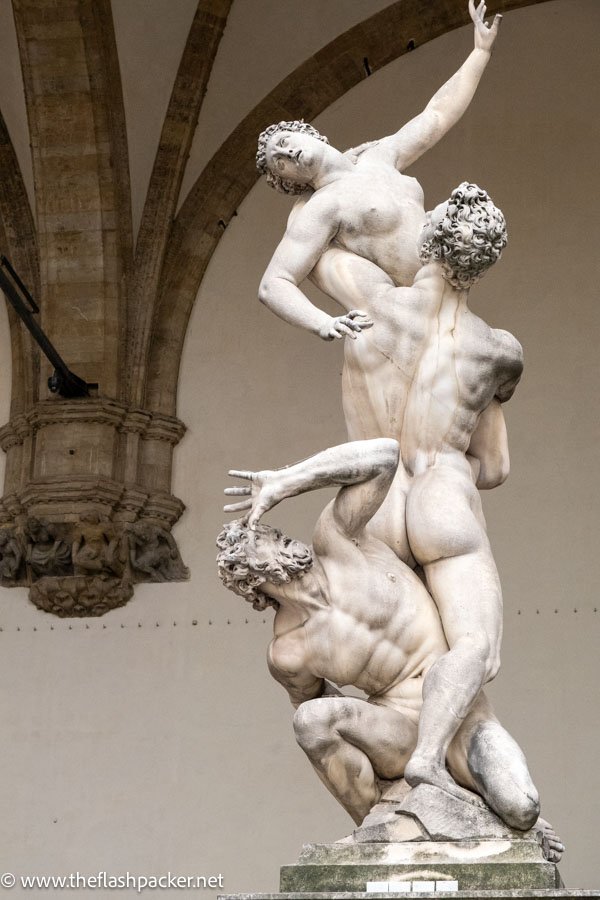
Piazza Santissima Annunziata
With its harmonious lines and symmetry, and surrounded on three sides by graceful porticoes, Piazza Santissima Annunziata is the most Renaissance square in Florence. Although it does not appear on many Florence itineraries, this piazza was the heart of the city for many years.
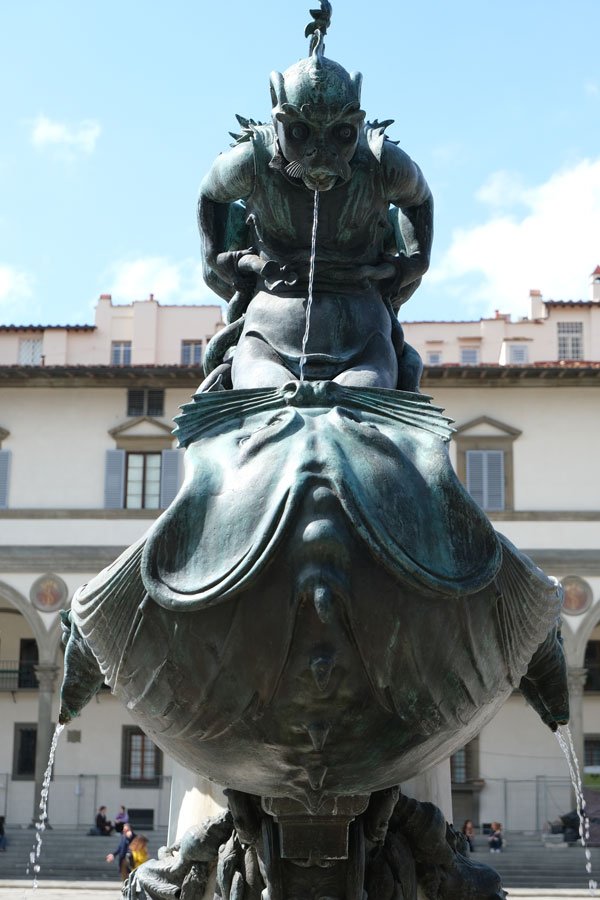
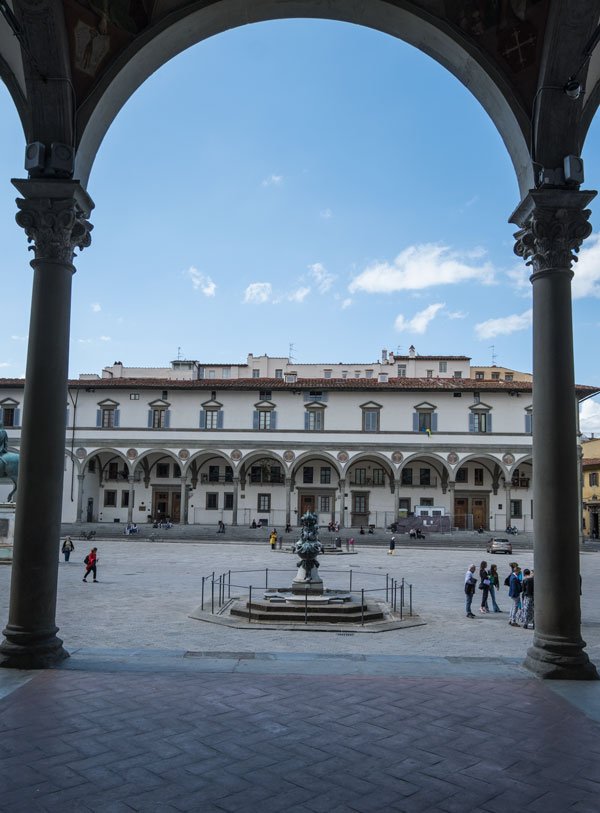
The Basilica della Santissima Annunziata and the foundling hospital (Spedale degli Innocenti) face a bronze equestrian statue of Ferdinando I, a Medici grand duke. From the open side of the piazza, there is a timeless view along the street to the red dome of the cathedral.
Piazza della Repubblica
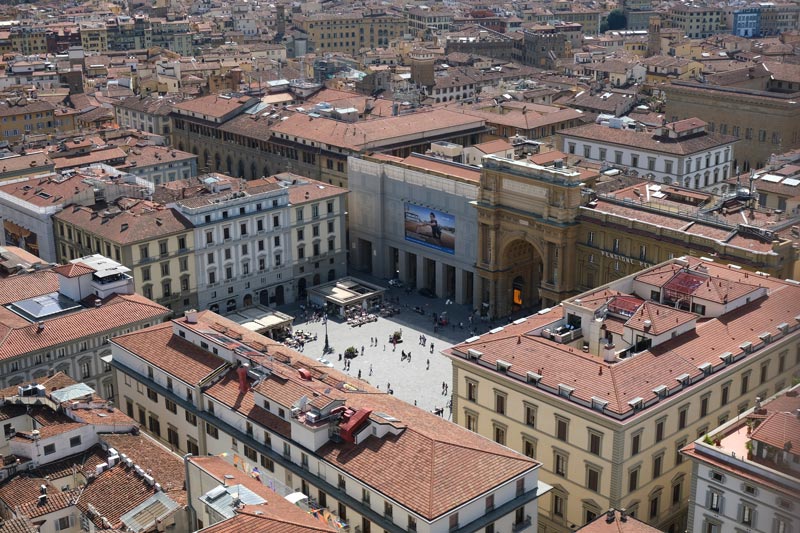
Florence’s history extends beyond the Medieval and Renaissance times.
The city’s roots can be traced back to the 1st Century BC when it started life as a Roman military colony. Piazza della Repubblica was the heart of Roman Florence, and the Column of Abundance (Colonna della Dovizia) marks the spot where the two main Roman roads met, the cardo and decumanus maximi.
This column is all that is left of Roman Florence.
Piazzale Michelangelo
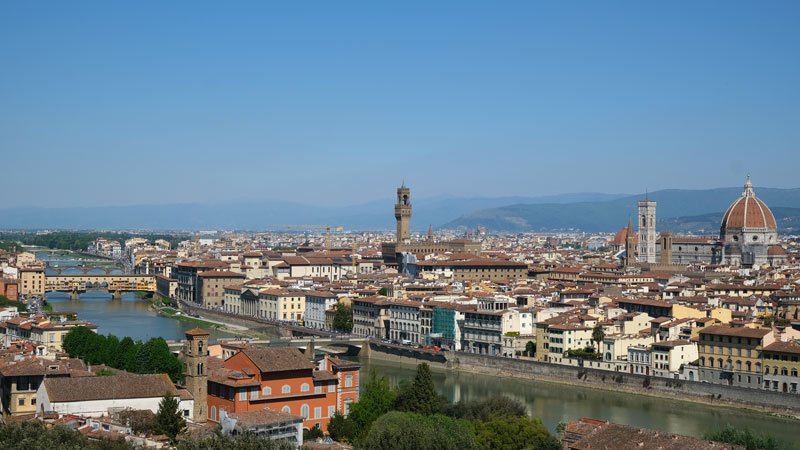
Hike uphill to Piazzale Michelangelo in the Oltrarno for panoramic views across the River Arno and Florence’s historic centre. There’s a good café with an outside terrace and the second fake David statue in the city.
To make good use of your time in Florence, I recommend combining this with San Miniato Church +/- Pitti Palace / Boboli Gardens.
Boboli Gardens
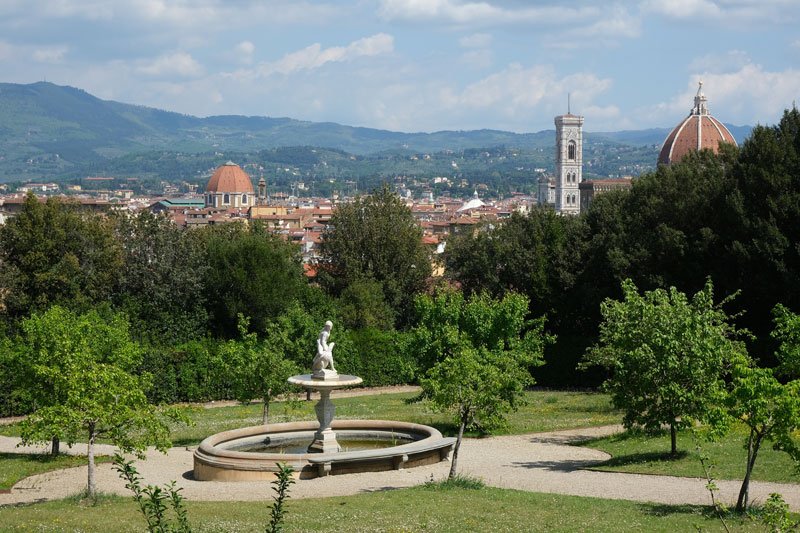
Rising behind the Pitti Palace courtyard, the extensive Boboli Gardens are a peaceful refuge from Florence’s tourist hordes. Home to ancient oak trees and elegant sculptures and fountains, this was the template for the gardens of many European royal palaces, notably Versailles.
Just add the timeless soundtrack of birdsong and church bells.
As you leave, don’t miss the Buontalenti Grotto (Medici Grotto), located at the entrance to the Vasari Corridor. The outer room of this cave-like space is a riot of stalactites, stalagmites, stones and shells, forming a pastoral scene.
Map of Florence Landmarks & Getting Around
If you find it helpful to map things out, here’s one showing the locations of these famous landmarks in Florence. For an interactive map, simply click here or on the image itself.
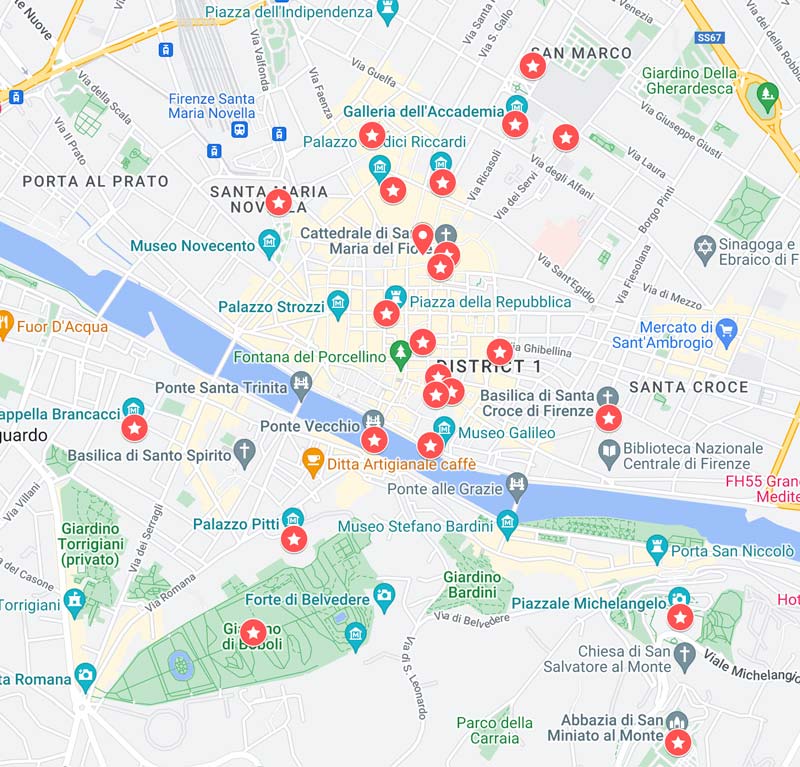
Most of these monuments, buildings and piazze lie on the north bank of the Arno River, many of which are clustered around the Duomo. A few other landmarks – notably Piazzale Michelangelo, San Miniato, Pitti Palace and Boboli Gardens – are across the river in the Oltrarno.
Although sightseeing in Florence involves a lot of walking, you shouldn’t need to use public transport except to head up to San Miniato and Piazzale Michelangelo.
Final Thoughts & Tips
And that’s a wrap.
Florence is not only one of the best places to visit in Tuscany but is also an excellent destination for solo travellers in Italy, even if you are travelling alone for the first time.
It easily has the best Renaissance art in the world. In the space of 24 hours, you can look Michelangelo’s David in the eye, scale Brunelleschi’s dome and be dazzled by Botticellis in the Uffizi Galleries.
Of the 15 million visitors staying overnight in Florence (2019 data), most make a beeline for the same four sites: The Uffizi, Accademia, Duomo and Giotto’s Tower. Don’t stand in an epic ticket queue or, worse still, fail to get your hands on a ticket. Book in advance for all of these attractions.
But whichever Florence landmark you choose to visit; you can’t go far wrong. Collectively, they paint a picture of the birthplace of our modern world and one of the greatest places on the planet.

About Bridget
Bridget Coleman is a Renaissance fan girl and has been travelling the globe for more than 30 years. She has visited 70+ countries, most as a solo traveller.
Articles on this site reflect her first-hand experiences.
To get in touch, email her at hello@theflashpacker.net or follow her on social media.
